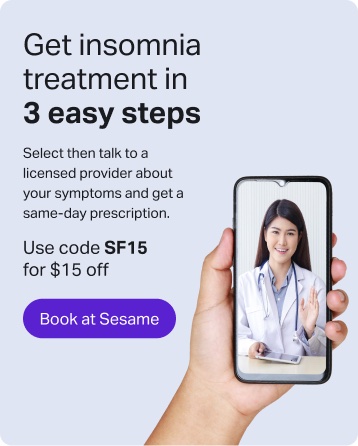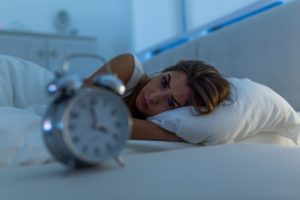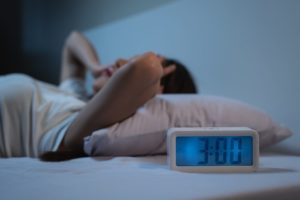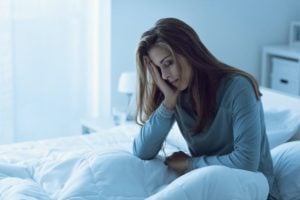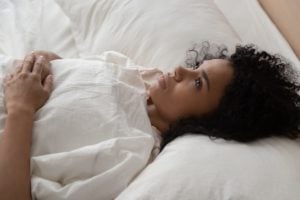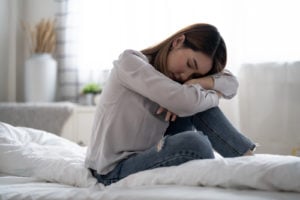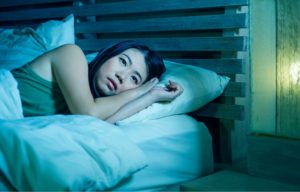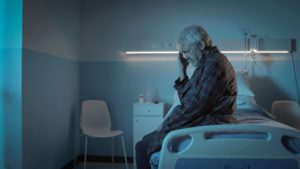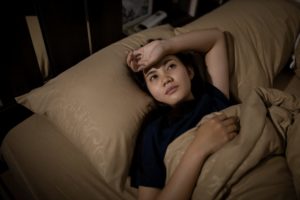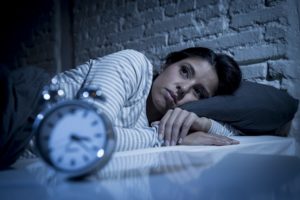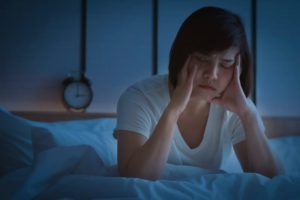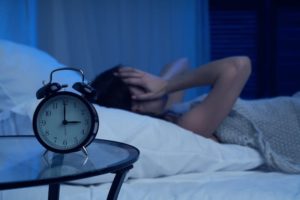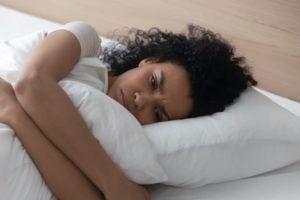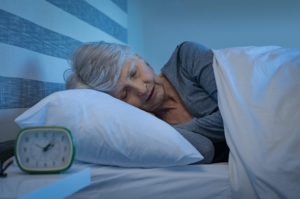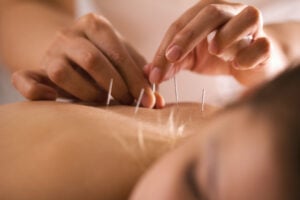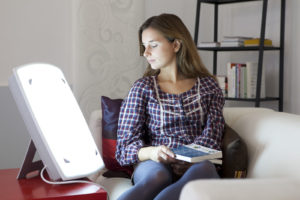Sleep Apnea vs. Insomnia
- Insomnia and sleep apnea are common sleep disorders. It’s possible to have both, and the two conditions may exacerbate one another.
- People with sleep apnea have repeated interruptions in their breathing while they sleep, eroding their sleep quality.
- Insomnia is an inability to fall asleep or stay asleep that can negatively impact mood, energy levels, and cognitive performance.
Although everyone has an occasional bad night’s sleep, people with sleep disorders have more persistent or severe sleeping problems. Among all sleep disorders, sleep apnea and insomnia are two of the most common, affecting millions of people .
At the most basic level, sleep apnea is a problem of abnormal breathing during sleep, while insomnia is an inability to fall asleep or stay asleep. Although they share some similarities, there are a number of major differences that make sleep apnea and insomnia distinct.
What Is Sleep Apnea?
Sleep apnea is a condition defined by recurring interruptions in breathing during sleep. The most common type is obstructive sleep apnea (OSA), which occurs when breathing repeatedly slows or stops because a person’s airway is blocked.
As respiration slows, a person with OSA will briefly awaken in order to restore their breathing. These awakenings are so short that many people aren’t aware of them. Nevertheless, they happen many times during the night and erode sleep quality.
A common symptom of OSA is excessive daytime sleepiness, which can include dozing off involuntarily. Other symptoms can include :
- Loud snoring, which may involve gasping or choking sounds
- Restless sleep
- Headaches or dry mouth in the morning
- Impaired concentration or memory
If left untreated, OSA can contribute to numerous health problems and increase the risk of dangerous accidents.
Central sleep apnea (CSA) is a less common type of sleep apnea and is caused by an inability of the brain and breathing muscles to properly regulate the pace of breathing.
What Is Insomnia?
Insomnia is a sleep disorder involving difficulty falling sleep or staying asleep, causing negative effects during waking hours. People with insomnia may have symptoms like irritability, fatigue, forgetfulness, and anxiety about sleep .
Short-term insomnia occurs for less than three months and is frequently caused by a stressful situation, such as work or relationship problems. Chronic insomnia persists for more than three months and is often associated with an underlying physical or mental health issue.
Are You Getting Enough Deep Sleep?
A variety of issues can cause degrade your sleep quality. Answer three questions to understand if it’s a concern you should worry about.
What Are the Differences Between Sleep Apnea and Insomnia?
One of the major differences between insomnia and obstructive sleep apnea is the underlying cause or nature of the conditions. At its core, sleep apnea is a problem of disrupted breathing during sleep. Insomnia occurs because the mind and body remain excessively activated when trying to sleep .
Similarly, there are differences in the typical symptoms of OSA and insomnia:
- Snoring: Frequent and loud snoring, often marked by choking sounds, is a common symptom of OSA, but snoring is not a symptom of insomnia.
- Daytime drowsiness: Poor sleep quality causes people with OSA to be prone to extreme sleepiness during the day. Although people with insomnia often feel fatigued, it’s rare for them to doze off involuntarily .
- Awareness of sleeping problems: People with insomnia are usually aware that they’re having sleeping difficulties. In contrast, many people with OSA don’t realize that they have breathing problems during sleep.
Another difference between insomnia and sleep apnea is how the conditions are diagnosed. In most cases, insomnia can be diagnosed based on a person’s symptoms without any specific testing . Sleep apnea requires testing that quantifies breathing disruptions, such as an overnight sleep study or an in-home sleep apnea test .
How Are Sleep Apnea and Insomnia Treated?
Treatment for obstructive sleep apnea focuses on preventing breathing disruptions during sleep. Most people with OSA are prescribed treatment with a positive airway pressure (PAP) device, such as a continuous PAP (CPAP) machine .
CPAP and other PAP devices keep the airway open with a stream of pressurized air. The air is sent from a bedside machine to the airway through a hose and mask. Consistent use of a PAP machine can improve breathing, enhance sleep quality, and mitigate many of the health risks associated with OSA. Other treatments include:
- Lifestyle changes: Losing weight, switching to a side-sleeping position, and avoiding alcohol in the evening may decrease breathing disruptions during sleep.
- Oral appliances: A mouthpiece that’s custom-fitted by a dentist can help hold the jaw in a position that reduces snoring and reduces airway obstructions.
- Nerve stimulation: This treatment implants a small device to activate certain nerves and muscles in the airway so that the airway does not become blocked.
- Surgery: Sometimes surgery can be used to address anatomical issues in the mouth or throat that interfere with breathing during sleep.
Insomnia treatment is designed to enable people to fall asleep and stay asleep. The nature of that treatment depends on the type and cause of insomnia. For short-term insomnia, sleep may improve by addressing underlying sources of stress or pain. Additional treatment may be needed for people with chronic insomnia.
One of the most effective treatments for chronic insomnia is cognitive behavioral therapy for insomnia (CBT-I). CBT-I involves improving sleep-related habits and reorienting negative thoughts about sleep. Improving sleep hygiene — a person’s bedroom environment and their daily routines — is often a point of emphasis during CBT-I.
Examples of ways to promote sleep hygiene include having a consistent sleep schedule, making sure the bedroom is dark and quiet, and limiting screen time before bed. CBT-I can include other practical approaches, such as relaxation techniques, which may make it easier to fall asleep or get back to sleep after waking up during the night.
Sometimes medications are used to treat chronic insomnia. Different types of prescription drugs can promote sleep, but they typically cause side effects. When necessary, doctors may prescribe these drugs along with CBT-I to make insomnia treatment more effective.
How Are Sleep Apnea and Insomnia Connected?
For many people, the two conditions and their symptoms overlap. Obstructive sleep apnea can cause restless sleep, which leads as many as 50% of people with OSA to say they experience insomnia. Similarly, up to 40% of those with insomnia also have OSA, which may trigger more unwanted awakenings .
“Sleep apnea and insomnia often feed into each other,” says sleep medicine physician Lulu Guo, M.D. “Apnea’s frequent awakenings can trigger insomnia-like sleeplessness, while insomnia’s hyper awareness of sleep struggles can heighten anxiety about apnea episodes. Many times, both need to be addressed to restore restful sleep.”
Some of this overlap may be related to risk factors that are linked to both insomnia and OSA. For example, both conditions are more likely in older adults, people with obesity , and people with certain coexisting health issues, such as lung and kidney conditions.
Can You Have Sleep Apnea and Insomnia at the Same Time?
It’s possible to have sleep apnea and insomnia at the same time. Plus, because they affect sleep in different ways, these two conditions have the potential to exacerbate one another. For example, OSA may cause fitful sleep that is characteristic of insomnia, and insomnia may make it harder for people to stick with CPAP treatment for sleep apnea.
At the same time, treatment for one condition may have benefits for the other. Studies suggest that CBT-I can help people who have both insomnia and OSA . Similarly, using a CPAP often helps address sleep disruptions from OSA, which may reduce restless sleep and insomnia-like symptoms.
References
8 Sources
-
Bonnet, M., Arand, D. (2024, May). Risk factors, comorbidities, and consequences of insomnia in adults. In R. Benca & A. Eichler (Ed.). UpToDate.
https://www.uptodate.com/contents/risk-factors-comorbidities-and-consequences-of-insomnia-in-adults -
Kline, Lewis R. (2024, October 9). Clinical presentation and diagnosis of obstructive sleep apnea in adults. UpToDate.
https://www.uptodate.com/contents/clinical-presentation-and-diagnosis-of-obstructive-sleep-apnea-in-adults -
Martin, J. L., & Neubauer, D. N. (2024, October 17). Patient education: Insomnia treatments (Beyond the basics). In R. Benca (Ed.). UpToDate.
https://www.uptodate.com/contents/insomnia-treatments-beyond-the-basics -
Neubauer, D., Bonnet, M., & Arand, D. (2024, February). Evaluation and diagnosis of insomnia in adults. In R. Benca & A. Eichler (Ed.). UpToDate.
https://www.uptodate.com/contents/evaluation-and-diagnosis-of-insomnia-in-adults -
Chervin, R. D. (2023, January 26). Approach to the patient with excessive daytime sleepiness. In T. E. Scammell (Ed.). UpToDate.
https://www.uptodate.com/contents/approach-to-the-patient-with-excessive-daytime-sleepiness -
Malhotra, A., & Kundel, V. (2024, December 17). Obstructive sleep apnea: Overview of management in adults. In N. Collop (Ed.). UpToDate.
https://www.uptodate.com/contents/obstructive-sleep-apnea-overview-of-management-in-adults -
Hargens TA, Kaleth AS, Edwards ES, Butner KL. Association between sleep disorders, obesity, and exercise: a review. Nat Sci Sleep. 2013;5:27-35. Published 2013 Mar 1. doi:10.2147/NSS.S34838
https://pubmed.ncbi.nlm.nih.gov/23620691/



